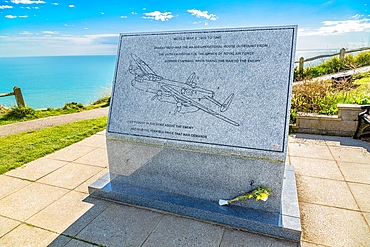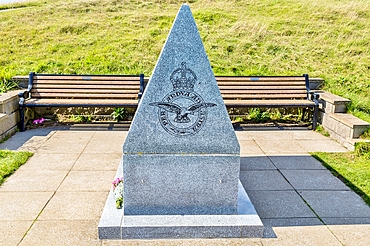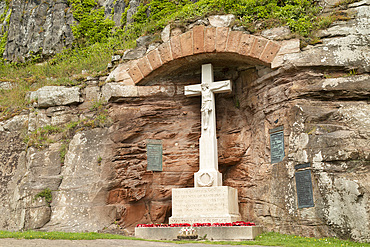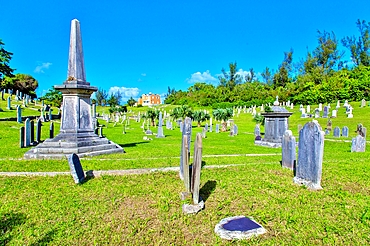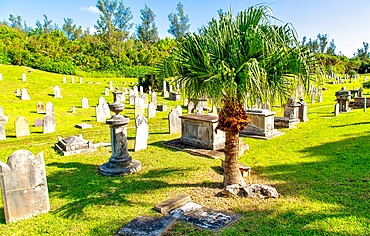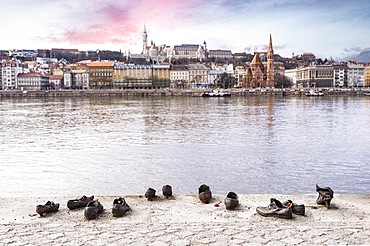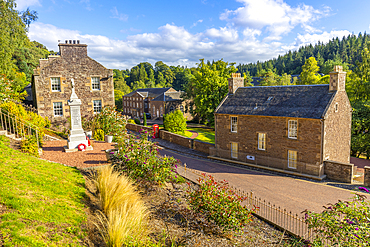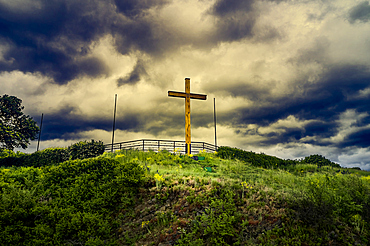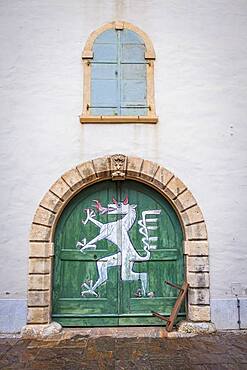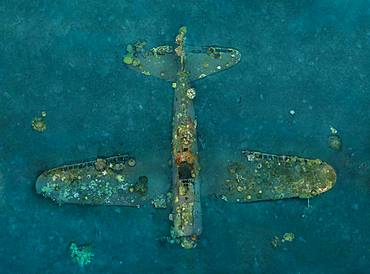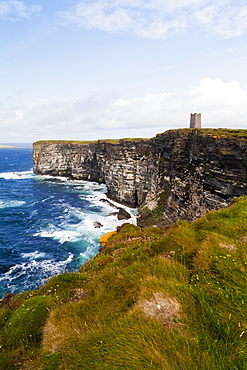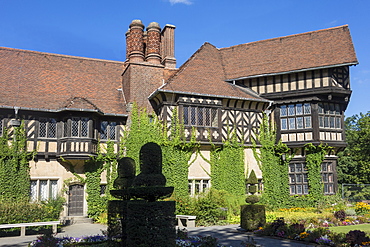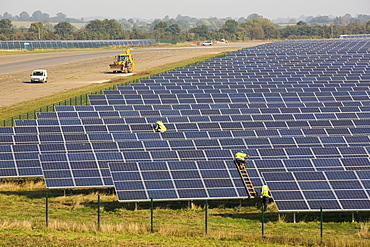Recent searches
Loading...
1358-216 - RAF Bomber Command Memorial, erected in 2012 to commemorate the 110000 World War II aircrew of Bomber Command of whom 55573 lost their lives, Beachy Head, near Eastbourne, East Sussex, England, United Kingdom, Europe
1358-215 - RAF Bomber Command Memorial, erected in 2012 to commemorate the 110000 World War II aircrew of Bomber Command of whom 55573 lost their lives, Beachy Head, near Eastbourne, East Sussex, England, United Kingdom, Europe
1358-214 - RAF Bomber Command Memorial, erected in 2012 to commemorate the 110000 World War II aircrew of Bomber Command of whom 55573 lost their lives, Beachy Head, near Eastbourne, East Sussex, England, United Kingdom, Europe
1358-213 - RAF Bomber Command Memorial, erected in 2012 to commemorate the 110000 World War II aircrew of Bomber Command of whom 55573 lost their lives, Beachy Head, near Eastbourne, East Sussex, England, United Kingdom, Europe
826-779 - War Memorial, depicting Jesus Christ crucified, in memory of the Fallen of World War One and World War Two, in the village of Bamburgh, Northumberland, England, United Kingdom, Europe
832-400752 - Village square with war memorial for the fallen of the world wars, Ringenwalde, Temmen-Ringenwalde, Uckermark, Brandenburg, Germany, Europe
832-400461 - Soviet soldier with weapon and flag, Monument to the soldiers of the Red Army who died in the Second World War, Dresden, Saxony, Germany, Europe
1358-173 - The Royal Navy Cemetery (The Glade), opened in 1812, containing over 1000 graves including 24 from World War I and 39 from WWII, managed by the Bermuda National Trust, Sandys Parish, Bermuda, Atlantic, North America
1358-172 - The Royal Navy Cemetery (The Glade), opened in 1812, containing over 1000 graves including 24 from World War I and 39 from WWII, managed by the Bermuda National Trust, Sandys Parish, Bermuda, Atlantic, North America
832-400063 - The Shoes on the Danube Bank is a memorial to honour the Jews who were massacred in Budapest during the Second World War
832-400064 - The Shoes on the Danube Bank is a memorial to honour the Jews who were massacred in Budapest during the Second World War
1237-553 - Robert Owen's house and War Memorial, New Lanark, UNESCO World Heritage Site, Lanarkshire, Scotland, United Kingdom, Europe
1350-6556 - Legs of a young tanned woman, relaxed on a boat in Ibiza, with the castle and city walls in view
1131-1806 - World War II memorial, Victory Square, Bishkek, Kyrgystan
1131-1807 - World War II memorial, Victory Square, Bishkek, Kyrgystan
860-291191 - White marble cross where American soldiers are buried, first American military cemetery of World War II, Colleville-sur-Mer, Calvados, Normandy, France
832-397143 - War memorial to the fallen of the 1st World War at the Place de la Liberte, medieval old town of Domfront, Domfront en Poiraie, department of Orne, Normandy region, France, Europe
809-8363 - French commemoration of the Armistice Day November 11 1918, end of the First World War, the Renaissance of St. Gervais Marching band, Haute-Savoie, France, Europe
746-91637 - The victory square and the big memorial commemorating the great patriotic war, 2. world war. The capital Bishkek . Asia, Central Asia, Kyrgyzstan
746-91640 - The victory square and the big memorial commemorating the great patriotic war, 2. world war. The capital Bishkek . Asia, Central Asia, Kyrgyzstan
746-91639 - The victory square and the big memorial commemorating the great patriotic war, 2. world war. The capital Bishkek . Asia, Central Asia, Kyrgyzstan
746-91641 - The victory square and the big memorial commemorating the great patriotic war, 2. world war. The capital Bishkek . Asia, Central Asia, Kyrgyzstan
746-91644 - Memorials commemorating the heros of the great patriotic war, 2. world war. The capital Bishkek . Asia, Central Asia, Kyrgyzstan
746-90906 - Figure of an austrian soldier. Fort Tre Sassi at Passo di Valparola in the dolomites. Tre Sassi dates back to world war one and is now museum. Europe, Central Europe, Italy
746-91645 - Memorials commemorating the heros of the great patriotic war, 2. world war. The capital Bishkek . Asia, Central Asia, Kyrgyzstan
746-90907 - Fort Tre Sassi at Passo di Valparola in the dolomites. Tre Sassi dates back to world war one and is now museum. Europe, Central Europe, Italy
746-91643 - The victory square and the big memorial commemorating the great patriotic war, 2. world war. The capital Bishkek . Asia, Central Asia, Kyrgyzstan
746-91642 - The victory square and the big memorial commemorating the great patriotic war, 2. world war. The capital Bishkek . Asia, Central Asia, Kyrgyzstan
1350-6032 - World War II Memorial, town of Pluvigner, departement of Morbihan, Brittany, France
1350-4706 - The War Memorial, Monument Aux Morts, Quai Rauba Capeu, Nice, Cote D,??Azur, France
1348-2898 - Students attending their open air classes at Doodhpathri in Budgam district, Kashmir, India.
1348-2899 - Students attending their open air classes at Doodhpathri in Budgam district, Kashmir, India.
1348-2901 - Students attending their open air classes at Doodhpathri in Budgam district, Kashmir, India.
1348-2900 - Students attending their open air classes at Doodhpathri in Budgam district, Kashmir, India.
1348-2902 - Students attending their open air classes at Doodhpathri in Budgam district, Kashmir, India.
1348-2871 - Guernsey Underground German Military Hospital from World War Two, Channel Islands, United Kingdom
1113-107175 - Exterior view of the Volgograd Panorama Museum and the Gerhardt Mill (one of the few remaining buildings from the Battle of Stalingrad in World War II), Volgograd, Volgograd District, Russia, Europe
1113-106993 - Memorial wall to World War II in the Nizhny Novgorod Kremlin, Nizhny Novgorod, Nizhny Novgorod District, Russia, Europe
1113-107014 - Monument outside the Gerhardt Mill (one of the few remaining buildings from the Battle of Stalingrad in World War II), Volgograd, Volgograd District, Russia, Europe
1113-106830 - Yak-3 aircraft from World War II exhibited in front of the Volgograd Panorama Museum, Volgograd, Volgograd District, Russia, Europe
1113-106999 - Thunderstorm atmosphere at the wooden cross in honor of the fallen in World War II on the Erpeler Ley, Erpel, Rhineland-Palatinate, Germany
1113-106241 - Compass rose at the end of the jetty Molo Audace, marks the place where the Audace torpedo docked in the port during World War I, brass compass, Trieste, Friuli-Venezia Giulia, Italy
685-1994 - Statue by Tom Murphy, of Captain Frederick John Walker, noted World War II British Royal Navy officer, anti-submarine warfare commander and namesake for the whisky, near Albert Dock, Liverpool, Merseyside, England, United Kingdom, Europe
1178-35204 - Poland, Masovia, Warsaw, Town square with World War II monument and illuminated cathedral
1178-35203 - Poland, Masovia, Warsaw, Town square with World War II monument and illuminated cathedral
1179-5199 - First World War rock tunnels on Mount Lagazuoi with Pelmo and Nuvolau peaks on background, aerial view, Natural Park of the Ampezzo Dolomites, Veneto, Italy, Europe
1350-777 - Martyrs sculpture and Square, monument to Lebanese nationalists killed here by the Ottomans in 1915, Beirut, Lebanon
1350-781 - Martyrs sculpture and Square, monument to Lebanese nationalists killed here by the Ottomans in 1915, in background Mohammad Al-Amine Mosque, Beirut, Lebanon
1350-741 - Emblem or mascot of the city. Detail, facade of Landeszeughaus (Armoury or arsenal), from Landhaushof courtyard, Graz, Austria
1184-5825 - Aerial of the Fortress of Terezin, used by the Gestapo as a prison in World War 2, Czech Republic, Europe
1116-50092 - World War One war memorial at Chollerton Parish; Chollerton, Northumberland, England
1116-50093 - World War One memorial of a soldier with rifle and poppy; Wark, Northumberland, England
1116-50091 - World War One war memorial at Chollerton Parish; Chollerton, Northumberland, England
1184-4769 - Aerial of the 1st World War Memorial, Isle of Lewis, Outer Hebrides, Scotland, United Kingdom, Europe
832-388177 - Flak position, gun at the sea from the 2nd world war in the evening sun, Senjehestneset, Senja island, Troms, Norway, Europe
832-384144 - Colorfully painted bunker from the 2nd World War at high tide in the sea, Plage Gurp, Grayan-et-l`Hopital, Aquitaine, Gironde, France, Europe
1116-48841 - A Stonehenge replica memorializes World War I, Maryhill, Washington, United States of America
1184-3686 - World War 2 Monument in Rostov-on-Don, Rostov Oblast, Russia, Eurasia
1184-3683 - World War Two Monument in the plains of the Republic of Kalmykia, Russia, Eurasia
860-287442 - Tara Pacific expedition - november 2017 Kimbe Bay, papua New Guinea, Zero wreck: Coral growth on this wreck is from a period of 74 years ! D: 15 m The ZERO, is a Japanese WW2 fighter plane wreck. This Zero wreck was discovered in January 2000 by local William Nuli while he was freediving for sea cucumbers. He asked the Walindi Plantation Resort dive team if they might know what it was, and when they investigated they uncovered the intact wreck of a Zero fighter, resting on a sedimented bottom in 15 m depth. This World War II Japanese fighter is almost completely intact. The plane is believed to have been ditched, the pilot is believed to have survived, but was never found on the island. He never returned home. Maybe he disappeared in the jungle? On 26th December 1943, during the battle of Cape Gloucester, the Japanese pilot made an emergency landing, ditching his Mitsubishi A6M Zero plane into the sea approximately 100m off West New Britain Province. The plane was piloted by PO1 Tomiharu Honda of the 204st K?k?tai. His fate is unknown but it is believed the he made a controlled water landing after running out of fuel and survived. Although he failed to return to his unit, the plane was found with the throttle and trim controls both set for landing and the canopy was open. There are no visible bullet holes or other shrapnel damage and the plane is still virtually intact after over 70 years underwater. It is a A6M2 Model 21 Zero, made famous for its use in Kamikaze attacks by the Japanese Imperial Navy. The wreck has the Manufacture Number 8224 and was built by Nakajima in late August 1942.
860-287440 - Tara Pacific expedition - november 2017 Zero wreck, vertical view Orthomosaic from 3D photogrammetry (13500 x 10000 px). D: 15 m Kimbe Bay, papua New Guinea, Coral growth on this wreck is from a period of 74 years ! The ZERO, is a Japanese WW2 fighter plane wreck. This Zero wreck was discovered in January 2000 by local William Nuli while he was freediving for sea cucumbers. He asked the Walindi Plantation Resort dive team if they might know what it was, and when they investigated they uncovered the intact wreck of a Zero fighter, resting on a sedimented bottom in 15 m depth. This World War II Japanese fighter is almost completely intact. The plane is believed to have been ditched, the pilot is believed to have survived, but was never found on the island. He never returned home. Maybe he disappeared in the jungle? On 26th December 1943, during the battle of Cape Gloucester, the Japanese pilot made an emergency landing, ditching his Mitsubishi A6M Zero plane into the sea approximately 100m off West New Britain Province. The plane was piloted by PO1 Tomiharu Honda of the 204st K?k?tai. His fate is unknown but it is believed the he made a controlled water landing after running out of fuel and survived. Although he failed to return to his unit, the plane was found with the throttle and trim controls both set for landing and the canopy was open. There are no visible bullet holes or other shrapnel damage and the plane is still virtually intact after over 70 years underwater. It is a A6M2 Model 21 Zero, made famous for its use in Kamikaze attacks by the Japanese Imperial Navy. The wreck has the Manufacture Number 8224 and was built by Nakajima in late August 1942.
1116-43775 - Marwick Head Rspb Nature Reserve, Kitcheners Monument, Orkney, Scotland
1116-43776 - Marwick Head Rspb Nature Reserve, Kitcheners Monument, Orkney, Scotland
844-19874 - View of the Washington Memorial and World War Two Memorial illuminated at dusk, Washington, D.C., United States of America, North America
844-19873 - View of the World War Two Memorial and Lincoln Memorial illuminated at dusk, Washington, D.C., United States of America, North America
844-19863 - View of World War Two Memorial detail, Washington D.C., United States of America, North America
844-19872 - View of the World War Two Memorial and Lincoln Memorial illuminated at dusk, Washington, D.C., United States of America, North America
450-3080 - World War II memorial of Nazi and Russian battle, Dukla Pass, Slovakia, Europe
832-383361 - The Polynational Second World War memorial ""Les Braves"" by Anilore Banon, 2004, Omaha Beach, Laurent-sur-Mer, Normandy, France, Europe
832-383379 - The Polynational Second World War memorial ""Les Braves"" by Anilore Banon, 2004, Omaha Beach, Laurent-sur-Mer, Normandy, France, Europe
776-5543 - World War 1 Memorial, Market Square, Salisbury, Wiltshire, England, United Kingdom, Europe
801-2467 - World War II Monument in the foreground, Washington Monument in background, Washington D.C., United States of America, North America
801-2452 - Gold Stars on the Price of Freedom Wall, World War II Memorial, Washington D.C., United States of America, North America
801-2451 - World War II Memorial, Washington D.C., United States of America, North America
1184-2759 - Museum of the Second World War, Gdansk, Poland, Europe
1297-266 - The Monument to the Women of World War II, in Whitehall, Westminster, London, England, United Kingdom, Europe
450-4369 - Internal courtyard of Zwinger Palace, completely rebuilt after World War 2 bombings, Dresden, Saxony, Germany, Europe
450-4370 - Internal courtyard of Zwinger Palace, completely rebuilt after World War 2 bombings, Dresden, Saxony, Germany, Europe
1272-142 - German Observation Tower from World War Two, Guernsey, Channel Islands, United Kingdom, Europe
1188-921 - Statue of Lenin and World War II liberation soldiers in Nizhny Novgorod on the Volga River, Russia, Europe
1199-474 - Man o War Cove, Jurassic Coast, UNESCO World Heritage Site, Dorset, England, United Kingdom, Europe
450-4283 - Latvian Riflemen Monument, Soviet statue commemorating fighters in the First World War, in square bearing its name, Riga, Latvia, Europe
385-1779 - Tourists walk across Castle Square Plac Zamkowy, site of Sigismund's Column and Royal Castle, Old Town rebuilt after World War II, UNESCO World Heritage Site, Warsaw, Poland, Europe
385-1778 - Tourists walk across Castle Square Plac Zamkowy, site of Sigismund's Column and Royal Castle, Old Town rebuilt after World War II, UNESCO World Heritage Site, Warsaw, Poland, Europe
385-1777 - Tourists walk across Castle Square Plac Zamkowy, site of Sigismund's Column and Royal Castle, Old Town rebuilt after World War II, UNESCO World Heritage Site, Warsaw, Poland, Europe
385-1764 - Soviet monument to the Crossing of the Dnieper at Museum of The History of Ukraine in World War II, Kiev, Ukraine, Europe
385-1765 - Soviet monument to the Crossing of the Dnieper and The Motherland Monument at Museum of The History of Ukraine in World War II, Kiev, Ukraine, Europe
746-87994 - Emplacements of the Austrian forces during World War 1 at Mount Lagazuoi in the Dolomites, now preserved as a museum. The peakds of the Tofane in the background. The Dolomites are listed as UNESCO World heritage. europe, central europe, italy, october
746-87993 - Emplacements of the Austrian forces during World War 1 at Mount Lagazuoi in the Dolomites, now preserved as a museum. The peaks of the Tofane in the background. The Dolomites are listed as UNESCO World heritage. europe, central europe, italy, october
746-37630 - World War II Normandy American Cemetery and Memorial, Normandy, France, Europe
746-77463 - Monument for second World War Commonwealth aircrew, Floriana. Malta. Europe.
1116-39237 - Commemoration of Soviet Armenia's participation in the second World War and monumental statue of Mother Armenia in Victory Park, Yerevan, Armenia
306-4409 - Schloss Cecilienhof, scene of the 1945 Conference at the end of World War II, Potsdam, Brandenburg, near Berlin, Germany, Europe
1167-863 - Atomic Bomb Dome, UNESCO World Heritage Site, Hiroshima, Japan, Asia
1184-109 - World War I Memorial, Lilongwe, Malawi, Africa
911-10750 - The Remains of the Godwin battery on the beach at Kilnsea at the head of Spurn point on Yorkshires East Coast, UK. Initially constructed during the First World War, the Godwin Battery was added to during the Second World War. It comprised of gun emplacements, search light, barracks, officers’ mess, and a hospital. This section of coastline is the fastest eroding coastline in Europe. The soft boulder clay cliffs are easily eroded and have been eroding since Roman Times, but recently the climate change impacts of increased stormy weather, increased heavy rainfall events and sea level rise have accelerated the rate of erosion. The average rate of attrition is 1.5metres per year, last year it was 5 metres.
911-10774 - Technicians work on Wymeswold Solar Farm the largest solar farm in the UK at 34 MWp, based on an old disused second world war airfield, Leicestershire, UK. It contains 130,000 panels and covers 150 acres.
911-10773 - Wymeswold Solar Farm the largest solar farm in the UK at 34 MWp, based on an old disused second world war airfield, Leicestershire, UK. It contains 130,000 panels and covers 150 acres.
911-10749 - The Remains of the Godwin battery on the beach at Kilnsea at the head of Spurn point on Yorkshires East Coast, UK. Initially constructed during the First World War, the Godwin Battery was added to during the Second World War. It comprised of gun emplacements, search light, barracks, officers’ mess, and a hospital. This section of coastline is the fastest eroding coastline in Europe. The soft boulder clay cliffs are easily eroded and have been eroding since Roman Times, but recently the climate change impacts of increased stormy weather, increased heavy rainfall events and sea level rise have accelerated the rate of erosion. The average rate of attrition is 1.5metres per year, last year it was 5 metres.
911-10772 - Wymeswold Solar Farm the largest solar farm in the UK at 34 MWp, based on an old disused second world war airfield, Leicestershire, UK. It contains 130,000 panels and covers 150 acres.
